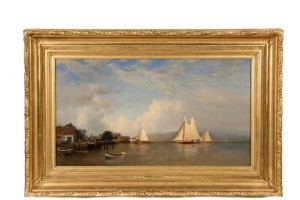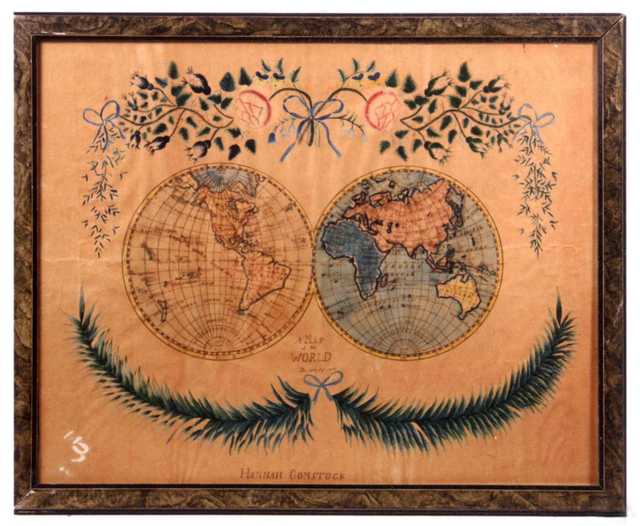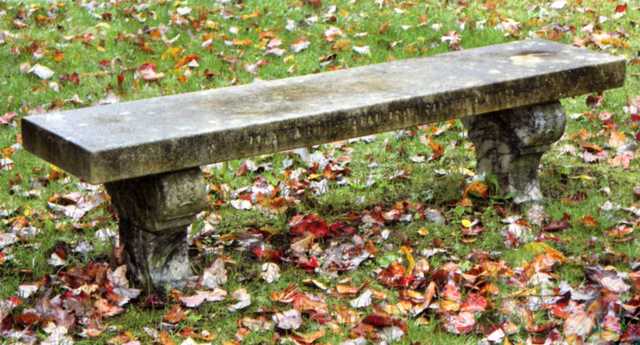
The star of the sale was Albert Bierstadt’s “Sunrise,” which attained $386,100. The last time it was sold at auction, at Sotheby’s in 2006, before the general downturn, it brought $553,600.
Review and Onsite Photos by Rick Russack, Catalog Photos Courtesy Thomaston Place Auction Galleries
THOMASTON, MAINE — A consignment of 31 fine paintings, being sold without reserves, generated $1,594,418, about 40 percent of the three-day total at Thomaston Place Auction Galleries’ August 27–29 sale. The paintings came from a Midwestern collection and included Albert Bierstadt’s “Sunrise” which brought the highest price of the sale, $386,100.

“On the Hudson Near Tappan Zee,” an oil on canvas in the original frame, by Francis Augustus Silva, signed and dated 1888, fetched $163,800, more than two and a half times its estimate.
The group, which included five other paintings that sold for more than $100,000 each, included several major marine paintings and there were several other good marine paintings throughout the auction. The sale included about a dozen cased ship models, one of which brought $52,650, an 1832 fire fighting pumper, which sold for $70,200, a Samuel Robb cigar store Indian, and more than 1,500 other lots. The salesroom was full, even though it was a beautiful summer day, six phone lines were active, absentee bids were processed, and internet bidding was available on three platforms. There were 568 successful bidders. The sale grossed $3,925,262.
Bierstadt’s “Sunrise” had last publicly sold in May 2006 at Sotheby’s, where it reached $553,600. In addition to “Sunrise,” several other paintings from the same collection did quite well, often substantially exceeding the high estimate. “On the Hudson Near Tappan Zee,” an oil on canvas in the original frame, by Francis Augustus Silva, signed and dated 1888, sold for $163,800, more than two and half times its estimate. Silva returned to New York in 1867 after serving in the Civil War as a hospital steward and opened his first studio, launching his professional painting career. Silva traveled along the New England and mid-Atlantic coastlines throughout the summer months, executing sketches that he later developed into finished works in his studio. He exhibited regularly at prestigious New York institutions, including the National Academy of Design and the Brooklyn Academy of Art, garnering a reputation as an important Luminist painter.
“Near Cape Elizabeth, Portland, Maine,” an oil on canvas, signed and dated 1887, by Alfred Thompson Bricher, (1837–1908) realized $175,500, the second highest price of the three day sale. “Conanicut Island, Rhode Island,” an oil on panel, signed and dated 1885, by William Trost Richards (1833–1905), achieved $117,000. Each of these paintings, plus the Bierstadt, were bought by a floor bidder. The other six-figure painting was “The Start of the 1866 Great Transatlantic Yacht Race, an oil on canvas by James Edward Buttersworth (1817–1894), also going out at $117,000.

“Conanicut Island, Rhode Island,” an oil on panel by William Trost Richards, signed and dated 1885, realized $117,000.
Two other paintings by the same artist: “The National Line’s Steamer Italy Amidst Other Vessels at Sea, Packet Mercury to Stern,” an oil on canvas, and “American Steam-Sail Ship Star of the South, Passing an American Full Rigged Ship at Sea” each brought $40,950, slightly over estimate. A painting by Thomas Buttersworth (1768–1842), father of James Edward Buttersworth, “HMS Meander, a Penance and a Cutter,” signed and titled by the artist, realized $58,500. A New England institution purchased “Twilight Seascape,” an oil on canvas, by William Trost Richards, for $76,050.
The sale included several other marine paintings and cased, scale, ship models from the MBNA collection, which Thomaston Place has been dispersing. MBNA was the country’s largest credit card processor before it was sold to the Bank of America for $35 billion in 2006. The company’s offices and call centers throughout Maine were furnished with the ship models, marine paintings and contemporary paintings, many by Maine artists.
Interest was strong in this group of models, with a huge boardroom model of the RMS Mauretania reaching $52,650. The word “huge” is appropriate; the model was more than 10 feet long and the catalog stated that “the fittings are purportedly gold plated.” The Mauretania was built for the Cunard line and launched in 1906. At 790 feet long, launched when it was the world’s largest and fastest ship. It remained in service until 1934. Another very large model, this one of the whale ship Lagoda, was more than 6 feet long and more than 8 feet tall on its custom-made stand. The fully rigged model, with sails and longboats, sold for a surprisingly low $6,435. The Lagoda was built in 1826 and converted to a whaler in 1846 by Jonathan Bourne of New Bedford, who is believed to have earned more than $650,000 with the ship. A half-sized model of the ship, 89 feet long, is in the New Bedford Whaling Museum and is the largest whale ship model in existence. Other fine cased ship models sold as low as $2,450.
The sale included four ship portraits by Antonio Jacobsen (1850–1921), which sold between $4,680 and $14,040; that was achieved by his portrait of the steam-sail ship Curacoa of the Red Devil Line. Selling for more than twice its estimate was a stormy sea scene, “Tacking Starboard in a Storm” by Jack Lorimer Gray, (1927–1981), which ended up at $37,440. A particularly attractive painting by Harrison Bird Brown, (1831–1915) fetched $16,380. It was titled “Ship Salvage in the Cove, Cape Elizabeth, Maine,” and depicted a rough sea, rocky coast, two ships and several men on the shore with a horse and wagon.

“The Start of the 1866 Great Transatlantic Yacht Race,” an oil on canvas signed by James Edward Buttersworth, earned $117,000. There are 16 figures on the deck of the yacht in the foreground.
Two marine scenes by American Impressionist Reynolds Beal (1866–1951) each sold over estimate, with the “USS Constitution off Annapolis” signed and dated 1924, bringing $9,945. Interestingly, Northeast’s August sale had eight lots of watercolors and drawings by the same artist. Each lot had multiple examples and all went inexpensively to the same bidder — perhaps a New Hampshire institution.
Paintings of New England scenes were popular. “A Village Road in Vermont” by Aldro Thompson Hibbard (1886–1972) earned $21,060. Hibbard summered on Cape Ann, painting many scenes of Rockport and the Cape Ann area, and he wintered in Vermont, painting snowy scenes, such as this one. “Painting the Pram,” an Impressionist Maine coastal scene of a man painting a small boat on a rustic dock, by George J. Stengel (1872–1937), achieved $11,700.
About 120 lots of contemporary paintings, formerly in the MBNA collection, were sold on the third day of the sale. It was a good opportunity to acquire works by well-respected artists at very fair prices. “Round Pond, Fall Morning,” by William Brewster Hoyt (b 1945) made $6,435, and two other paintings by the same artist went for $3,803 each. Some went home with new owners for less than $1,000. For example, a stormy sea scene, “Small Craft Warning” by Ron Fletcher, a contemporary Maine artist, brought only $685.
The most sought-after piece of folk art in the sale was a large, impressive cigar store Indian, attributed to New York master carver Samuel Robb, which achieved $39,780. The 76-inch figure of a Native American chief, with a carved headdress and one hand raised to his brow, was on its original plinth. Another interesting Nineteenth Century tobacconist figure, a bare breasted woman with upraised arms, japanned with black and gold, went to a bidder in the room for $2,457, which seemed quite reasonable.
Other folk art included a full-bodied bull weathervane, thought to have been made by Cushing or Jewell, which ended up at $16,380. It had a well-weathered patina and was 26 inches long. Of the three scrimshawed pie crimpers in the sale, one was quite unusual. It had two pierced wheels and a diamond-shaped tortoiseshell inlay. It had descended in the Howland family, a prominent New Bedford whaling family, and it realized $2,106. A polychrome, circa 1850, whale tooth, depicting a fully rigged merchant ship flying three flags, was bought by a bidder in the room for $3,393.
A small, risqué figurehead, probably from a yacht given its small size — only 28 inches tall — achieved $21,060. The attractive woman, wearing a large hat with carved gilt feathers, had earrings in each ear, and a low cut dress. It was cataloged as Dutch, circa 1820, with an old surface. A schoolgirl map of the world by Hannah Comstock, Danbury, Conn., 1815, ink and gouache on paper, reached a final price of $1,521, going to a dealer in the room.
For the most part, furniture was well received. An early Nineteenth Century satinwood Adams lady’s dressing table inlaid with bellflowers, drapes and swags, had a top that when lifted revealed a mirror. It reached $5,265. A large George II two-part secretary of highly figured walnut with cross-banded edges finished at $4,388. A Federal period, bonnet top, tall case clock made by Solomon Parke & Co., Philadelphia, circa 1800, earned $5,850.
Aside from the paintings, one of the most interesting and heavily contested items in the sale was an 1832 fire pumper, known as “Lady Washington.” It was described as a “gooseneck tub pump engine,” which had been made for Engine Company 40 of Manhattan by James Smith of New York. It had a fancy mahogany and oak case, gilt moldings and a pump tower decorated with hand painted scenes, one of which depicted Victory laying a wreath on a bust of George Washington and another panel depicted Pocahontas asking her father not to kill Captain John Smith. It had been professionally restored and spirited bidding took it to $70,200.
Selling late on the first day was an item of particular California interest. A pencil drawing of Sutter’s Fort, dated 1836, it may be the earliest known view of the fort, which was the site of the Sutter’s Mill built by John Sutter, whose employee discovered a nugget that led to the California Gold Rush of 1849. This drawing had been made early on when there was just one building, as it appeared in 1836 or shortly after. It was inscribed Sutter’s Fort as seen from the SW about two miles. One can not form much of an ID from this — tis built of mud brick, there is a trench about it and hay stacks, old carts, logs &c &c, these are out lines.” The catalog description indicated that the drawing may have been cut from a letter. That did not seem to deter bidders, as it sold for $3,510, nearly three times the estimate.

“Near Cape Elizabeth, Portland, Maine,” an oil on canvas signed and dated 1887 by Alfred Thompson Bricher, earned $175,500, the second highest price of the three-day sale. Another painting by the same artist, “Twilight Seascape,” went for $76,050 to a New England institution.
There were three lots of albumen photographs of yachts, circa 1895, with each containing four to six similarly matted and identified boats. For some reason, two lots sold but one did not. The lot of four brought $644 and the lot of five brought $819. The group of six did not sell.
The third day of the sale included several lots of Oriental material, which did well, and more than two dozen pieces of Brother Thomas pottery. Brother Thomas (1929–2007) was a Benedictine who began making pottery in 1953. He was strongly influenced by Asian pottery, often adapting traditional Chinese and Japanese methods and materials to his work and the glazes he developed. He was said to be an exacting artist, often destroying as much as 80 percent of a firing. He is considered one of the preeminent midcentury potters. Bringing $3,510 was a canteen shaped vase in his distinctive honan tenmoku glaze, which was incised on base “Benedictine Monks, Weston, Vermont.” Most other pieces sold between $585 and $1,990, but one piece, a 12-inch charger with a blue and copper-red glaze, went out well under the estimate, at only $293.
The surprise among Oriental material was a pair of woodblock prints by Katsusika Hokusai (1760–1849) from the series “Thirty-six Views of Mount Fuji.” Each was signed in the print; one was titled “At Sea off Kazusa” and the other was “View from Lake Suwa in Shinano Province.” The lot had been estimated at $800 but sold for $15,210. A black and white print by the same artist brought $1,872.
Also doing well was a Twentieth Century Japanese embroidery, “The Lone Wolf,” after the original by Alfred Kowalsky-Wierusz (1849–1915) done by S. Nishimura, Kyoto & Tokyo, circa 1920. Estimated at $700, it realized $7,020. There were several mixed metal pieces from the Meiji period, 1868–1912. A pair of three-part temple vases, about 20 inches tall, in bronze with silver, gold and copper inlay, each decorated with scenes, sold for $12,870. A pair of vases signed by Atsuyoshi Ikko Dou, circa 1880, with silver, gold and copper inlay and a cinnabar enamel field decorated with cranes, fish, sparrows, blossoms and prunus, achieved $10,530. A very elaborately rosewood davenport desk, carved with dragons, bamboo, floral vines and more, went for $4,095, and a marble top rosewood Anglo-Indian center table, with a reticulated skirt and heavily carved pedestal, reached $12,870.
The sale included several pieces of fine estate jewelry. The top selling piece was a hallmarked Nineteenth Century caduceus-form gold and ivory hairpin by Italian maker Castellani, circa 1875, which earned $17,750. It is a well-known form, with an identical piece in the Metropolitan Museum of Art, and it has been illustrated in the book on Castellani’s work. An Art Deco platinum sugarloaf sapphire and diamond lady’s ring, centered with an estimated 14.75-carat Burmese star sapphire flanked by tapered diamond baguettes, achieved $14,625, and a Burmese ruby brooch, set in yellow gold, with a large, natural oval ruby, finished at $5,850.
All in all, it was a strong three-day sale. All prices include the buyer’s premium.
For additional information, www.thomastonauction.com or 207-354-8141.




































